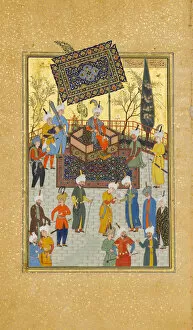Khosrau Ii Collection
Khosrau II, also known as Khosrow Parviz, was the last great king of the Sasanian Empire
All Professionally Made to Order for Quick Shipping
Khosrau II, also known as Khosrow Parviz, was the last great king of the Sasanian Empire. He ruled from 590 to 628 AD and is remembered for his military conquests, architectural achievements, and patronage of the arts. Khosrau II's reign was marked by both prosperity and conflict, as he waged wars against the Byzantine Empire and expanded his empire's borders. Despite his successes on the battlefield, Khosrau II faced internal opposition from powerful nobles and religious leaders who resented his centralization of power. In 628 AD, he was overthrown in a coup led by his son Kavadh II and died shortly after in captivity. Khosrau II's legacy lives on through his contributions to Persian culture and history, making him a figure of fascination for historians and enthusiasts alike.












